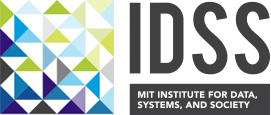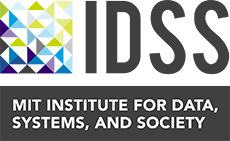Financial Networks, Shocks, and Systemic Risk
IDSS PIs: Daron Acemoglu, Asuman Ozdaglar
Collaborator: Alireza Tahbaz-Salehi (Columbia University)
The recent financial crisis, often attributed in part to contagion emanating from pervasive entanglements among financial institutions, has brought to the fore the role of complex economic, financial or social interlinkages as channels for propagation and amplification of shocks. Research by IDSS faculty Daron Acemoglu, Asuman Ozdaglar, and their collaborator Alireza Tahbaz-Salehi (Columbia Business School, Columbia University) looks at how the economy’s underlying network translates microeconomic shocks into macroeconomic outcomes, developing a unified framework for the study of how network interactions can function as a mechanism for propagation and amplification of microeconomic shocks.
A reduced-form model is used to explore the network architecture/propagation relationship. The model consists of three parts: (i) a fairly general interaction function that links each agent’s state to a summary measure of the states of other agents; (ii) an (interaction) network that specifies how these summary measures are determined as a function of other agents’ states; and (iii) an aggregation function that describes how agent-level states collectively shape the macroeconomic variable of interest. The results illustrate that if either the aggregation or interaction function is non-linear, the exact nature of these non-linearities are central to determining how the economy’s underlying interaction network affects its ex ante performance. With a non-linear aggregation function, the economy’s ex ante performance depends on the heterogeneity in the extent to which agents interact with one another. Specifically, if the aggregation function is concave a more uniform distribution of inter-agent interactions increases macroeconomic performance in expectation. When the interaction function is concave, economies with denser interconnections outperform those whose interaction networks are more sparse. Further, when the interaction function is convex the performance ordering flips entirely, making the complete network the worst performing economy. Another important result indicates that standard first-order measures of systemically important agents do not take into account the mechanics of financial contagion and therefore may be misleading. A second-order measure, concentration centrality, which captures the concentration of an agent’s influence on the rest of the agents, may prove a more useful metric.
This research has important implications for understanding cascading financial network failures, in particular the “robust-yet-fragile” characteristic of financial network architectures. These results can inform economic policy in ways that may mitigate systemic risk, offering a degree of insulation from the propagation of microeconomic shocks that can lead to global economic crisis.
References and Related Content:
“Networks, Shock Propagation, and Systemic Risk” – Oxford Handbook on the Economics of Networks, 2015.
“Systemic Risk and Networks” – EECS Connector, Spring 2015.


